Chris Hardwick's Blog, page 2094
April 27, 2017
RIVERDALE Needs to Slow the Heck Down
There’s definitely a trend happening in TV, and for the most part it’s a good one. Series keep getting shorter and shorter episode orders. Most of the time, it’s because creatively, shorter episode orders make sense for a certain show. Look at Legion, kicking ass and taking names in only eight episodes. Or Westworld. Or Fargo. Showrunners and writers aren’t beholden to the old status quo of 23+ episodes in one season, and it’s paying off in quality of the shows, as writers and actors are able to sign on for shorter production schedules they normally wouldn’t be available for if it meant shooting for most of the year.
But sometimes, shorter episode orders hurt shows creatively. I’m looking at you, Riverdale.
Let me preface this by saying I’m a huge Riverdale fan. As one of the first to review the series, I was obsessed from the start. But deep into its first season, I find myself thinking the same thing while watching every episode. I think I first noticed it around episode 5.
Riverdale moves way too fast.

It’s gotten worse and worse as the season has moved forward. The writers pack way too much plot into each episode. I get whiplash as each scene smash cuts to another in rapid-fire succession. I can barely process the emotional weight of each scene or character interaction before the show has already moved on to another equally-important moment.
What’s wrong with lingering on each scene, letting each moment breathe to give both the characters/actors and the audience time to fully process what’s happening? Nothing, and in fact, you’d get a deeper emotional payoff and audiences would feel more of a connection to what’s happening onscreen. Plus, you’d actually remember everything that happens in each episode instead of forgetting literally entire storylines because there’s just too much damn story in each episode. Relationships end before I ever really get invested in them. I can never keep track of who is mad at whom, or who is investigating whom, or even who looks the guiltiest of murder before they’re cleared of suspicion and another suspect enters the game.
I won’t even try and pretend like I know how to write or produce a TV show (showrunners are absolute geniuses and I’ll never understand how their brilliant minds work), but as someone who watches them for a living, I know how to spot the problem when something just doesn’t feel right. The real problem is in the short episode order Riverdale received as a midseason series. With only 13 episodes for its first season, it feels as if the writers still packed 23 episodes worth of story into this season, and that hurts the show more than it helps.
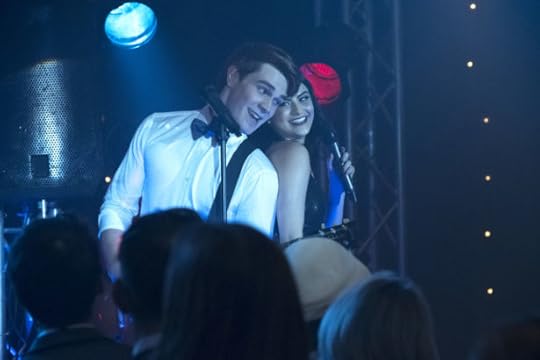
But I’m not the only one who feels this way. Whenever I voice my concerns over Riverdale‘s creative speed on social media, I’m met with a chorus of viewers who agree (and some even confessing that they had to give up the show entirely for that reason). And even Riverdale‘s executive producer Roberto Aguirre-Sacasa feels the restrictions put on him in an 13-episode order.
“I’ll tell you what I wish. I wish we were one solid hour of television,” the showrunner recently told Nerdist along with a small group of press at an advance screening of an episode. “It’s just like 41 [minutes]. The cast is so big as you guys know, and everyone’s so good and you want to know more about everyone. You’re trying to tell a bunch of stories and create intimate character moments and things like that. So if I could take it anywhere, it would be to a one-hour, full, no commercials kind of place just to tell more stories.”
According to Aguirre-Sacasa, most of the episode cuts come in way over the allotted 41-42 minutes, and through edits, they have to cut sometimes up to 30 extra minutes. That’s almost a whole additional episode! That explains why every episode feels so jam-packed and sped up.
Going off that information, instead of giving Riverdale 60-minute episodes (since the CW would never go no-commercials in prime time), shouldn’t the CW series just have a longer episode order? If they have enough content to make 23 episodes, what’s stopping them?

“I don’t think you ever turn down more episodes,” Aguirre-Sacasa said. “Yeah, I’d be up for it. I think everyone would. As [executive producer] Greg Berlanti always says, ‘What’s the prize for winning a pie-eating contest? More pie.'”
When I pointed out to him that most showrunners nowadays sing the praises of shorter episode orders and how it’s creatively beneficial for most shows to have trimmed and sleek seasons, he nodded.
“Yeah and listen, I think it was great that our first season was 13 because the murder drives us through it, and we get as much out of it and service it,” Aguirre-Sacasa said. “The one drawback is you can’t do those really special episodes. I’m a TV fanatic. I always loved when there was like a special episode that was almost outside of continuity. That’s the only, biggest drawback to having a shorter order. The nice thing is you can control the story a little bit more and take maybe a little bit more time. The grass is always greener right? Advantages and challenges, they both have.”
Do you think Riverdale would have been better off with 23 episodes for its first season, or do you agree with him that 13 made more sense? Should the series get a bigger order for season two? Tweet me your thoughts and opinions at @SydneyBucksbaum!
Images: The CW
Riverdale airs Thursdays at 9 p.m. on The CW.
Here’s the spring TV you should be watching
JUSTICE LEAGUE Funko Pops! Include Superman
Warner Brothers and DC Comics long awaited Justice League movie is due to hit in just over six months, and while we are all hoping it will be a less somber, broody affair than Batman v Superman, one thing is for sure: the forthcoming Justice League Funko POPS! will be anything but somber and broody, they’ll be heroically adorable instead.
Thanks to the official DC Comics blog, we now have our first glimpse into the pint-sized versions of the world’s greatest super team, as they will soon appear in their big screen debut this coming November. Mini versions of all the main members will be included, including Batman (Ben Affleck), Wonder Woman (Gal Gadot), Flash (Ezra Miller), Aquaman (Jason Momoa), Cyborg (Ray Fisher), and in the worst kept secret in movie history, Henry Cavill’s Superman. Isn’t it great to have cute, little versions of the JLA’s “Big Seven?” Oh wait, it’s just six, because no Green Lantern on the team (boo!)

The new Justice League Funko POP! vinyl figures will hit stores on August 12, a full three months before the movie hits theater screens. You can see individual images of each of the new figures down below in our gallery, which each photo accompanied by the character’s corresponding logo, which was very thoughtfully made for each hero by Lex Luthor in Batman v Superman. Well, except for Superman’s and Batman’s of course. You can’t depend on Lex for everything, now can you?
Zack Snyder’s Justice League hits theaters everywhere on November 17, and the new Funko Pops! hitting on August 12.
Are you planning on collecting each of these heroic new POPS? Be sure to let us know down below in the comments.
Images: DC Comics / Warner Brothers / Funko
Burt Reynolds Looks Back on Stardom in DOG YEARS (Tribeca Review)
In the 1970s and ’80s, Burt Reynolds was not only a movie star — fronting memorable films like Smokey and the Bandit and Deliverance — but also a sizzling sex symbol who promised trouble, posed nude while smiling like a centerfold, and committed affable mayhem on talk show appearances. Now Reynolds is in his 80s. And though warmly remembered as a beloved bad boy, he is undoubtedly past his prime. And so, he looks back on his career through Dog Years, a drama that blends archival footage and clips of his classic filmography with the story of his fictional doppelgänger Vic Edwards.
Written and directed by Adam Rifkin (Detroit Rock City, Small Soldiers), Dog Years follows a washed-up Vic on a wonky road trip with a furious impromptu chauffeur named Lil (Modern Family‘s Ariel Winter). Together, they revisit the hometown he abandoned in favor of Hollywood and the pursuit of fame.
The film begins with a vintage clip of a young Reynolds on a forgotten chat show, his smile cutting across the decades with a dangerous verve. Then Dog Years smash-cuts to the present: Reynolds wrinkled, listless face in close-up confronts us with the cruel passage of time that won’t let even our most adored icons escape. Efficiently, Rifkin paints Vic’s world as shrinking and lonely. His old dog has just been put down in a none-too-subtle metaphor. His home is empty of loved ones or bustle. His routine involves TV dinners alone, and the occasional pathetic outing with Chevy Chase, where the two faded stars kvetch over coffee while leering at a batch of young women obviously bending over in nearby a yoga class.

Rifkin wants to paint Vic as an old dog yet lovable rogue, but fails outright on the latter. To break up the bitter monotonies of his life, Vic agrees to go to Nashville as the guest of a film festival that promises him “first class accommodations” and a “Lifetime Achievement Award” previously offered to Robert De Niro, Jack Nicholson, and Clint Eastwood. But Vic steadily sours on the event as he’s forced into the indignities of flying coach like lowly non-famous folk, being picked up not by a limo but a junker car with a fowl-mouthed driver (Winter), and checked into a noisy motel where the upgrade means a coffee pot, mini-fridge, and microwave sharing a crowded corner space. When he turns up to the festival’s kick-off event to discover it’s in a dive-bar where a motley assembly of chairs have been arranged to face a puny pull-down projection screen, he blows his top, drunkenly calling the crowd “losers” to their faces, and crushing the spirits of the fest’s founders who eagerly call themselves his biggest fans.
Rifkin does not give us an anti-hero, but an outright asshole who hisses insults and condescending life advice when he’s not ogling women a quarter of his age or losing himself in the memories of his good ol’ days. Vic is a repellent protagonist, who lacks any of Reynolds’ signature spark or charm. Reynolds feels like he’s sleepwalking through much of the role. While he occasionally perks up during the film’s most earnest emotional moments, he by and large seems just as bored by this adventure as Vic. And so instead of getting to relish in surreal moments where now Reynolds is composited into Smokey and the Bandit and Deliverance, carrying on awkward conversations with his younger, more strapping self, these scenes play as cruel comparison, reminding audiences of when Reynolds actually appeared to give a damn about his craft.
For her part, Winter tries desperately to make up for his lack of energy. But playing a Manic Pixie Bitch on Wheels, she overdoes it becoming a cartoon of a troubled young woman whose covered in faded tattoos, ranting about her long history of mood-stabilizing drug experimentation, and endlessly turning to her phone to fight with her brutish, cheating boyfriend Bjorn. To her credit, Winter provides a far cry from her bookish and snarky Modern Family character, showing admirable range. But Rifkin seems to mock her efforts, offering her a ridiculous uniform of a crop top that barely covers her ample bust, and a pair of Jean shorts so short and so shredded that they expose a regularly distracting amount of her bare ass.
I assumed this was meant to be a joke about how inappropriate a personal assistant the festival had provided to Vic, and that Winter would be given something more substantial later. But for the entirety of the movie, half her ass is hanging out—whether she’s battling with her bad boyfriend, coaching Vic through a tough emotional beat, or crashing a very posh wedding where mysteriously no one bats an eye at her outfit. I know this seems a petty point to be hung up on. But I believe it speaks to Rifkin’s lack of understanding of women, emphasized by the other female characters in the film, most of whom are scantily clothed and/or dedicated to fawning over Vic in flashbacks and a tone-deaf climax that essentially makes a pivotal character mute to avoid the selfish movie star getting any kind of comeuppance. Women are objects of Vic’s lust or pity, and that is all.
Dog Years is a movie that strives for elegiac depth, but achieves only snoozy shallowness. Its emotions are forced or fractured. Its jokes are achingly cornball, like this exchange between Chevy and Vic about whether he should attend the Nashville festival:
Chevy: Nashville’s become pretty hip!
Vic: That’s what I’m worried about, my hip! What if I break it?
Ha ha?
Beyond that, Rifkin attempts to chisel out an unlikely but charming friendship between Vic and Lil, but Reynolds is practically comatose and Winter’s is full-on manic, making for a chemistry that is catastrophic, not compelling. All of this builds to an earnest but unearned conclusion that gives its vicious, self-centered star too easy a road to redemption. Ultimately, despite its hard turn to sentimentality in the final act, Dog Years falls under the weight of its own condescending attitude toward fans and flyover states. By buying so hard into Vic’s smug and alienating ideology, Dog Years cuts off its audience from seeing him as little more than a rightfully lonely jerk, and seeing the film as little more than a waste of time.
2 out of 5 burritos:

Images: Broken Twig Productions Inc.
Kristy Puchko is a freelance entertainment reporter and film critic. You can find more of her reviews here. Follow her on Twitter!
What Jeff Goldblum’s Return Means for JURASSIC WORLD 2
Two years ago, Jurassic World completely revitalized the Jurassic Park franchise while largely ignoring the events of the second and third films. Now, as Jurassic World 2 finally enters production, it seems that a familiar face from the past is ready to rejoin the dino action. Jeff Goldblum‘s Ian Malcolm is making a comeback, and today’s Nerdist News is examining the Jurassic continuity fallout.

Join host Jessica Chobot as she welcomes Goldblum back to the Jurassic World sequel. Of course this isn’t Goldblum’s second turn with the franchise. Ian Malcolm took center stage during the events of The Lost World, and he had been largely discredited because he wrote about his adventures during the first film in the face of a cover up. Naturally, it was pretty hard to pretend the that the cloned dinosaurs didn’t exist once they started stomping around in downtown San Diego!
Sharp eyed fans may have noticed that Ian Malcolm’s book, “God Creates Dinosaur,” in the background of Jurassic World. We can’t help but wonder if Malcolm wrote that book before The Lost World or after. Either way, we’re thinking that Jurassic World 2 will either have to acknowledge the events of The Lost World or else fully commit to the idea that they didn’t happen.
Goldblum isn’t the only new addition for the sequel. James Cromwell is also joining the cast as Benjamin Lockwood, a man who played a key role in helping Jurassic Park founder, John Hammond, create the cloning technology to revive the dinosaurs. And in the first picture of Cromwell as Lockwood, he looks like he could win a cosplay award for channeling the late Sir Richard Attenborough. Additionally, one of the latest details to emerge is that we may see some dino action on a submarine. And we are totally down for that!
Are you excited to have Goldblum back for Jurassic World 2? Let’s discuss in the comment section below!
First Glimpse of SUPERGIRL’s General Zod
Ask the average, casual fan who is Superman’s second most popular villain in his rogue’s gallery after Lex Luthor, and most people would tell you it’s General Zod. In the pages of the comics, the second biggest Superman villain would probably be Brainiac, but thanks to the character of Zod’s status as the bad guy in the movies Superman II and, more recently, Man of Steel, for most the ruthless Kryptonian military leader is much higher on that list.
Now, General Zod is coming to plague Superman’s cousin Kara on the second season finale of Supergirl, and is likely being set up as the “big bad” of season 3. The first pics of actor Mark Gibbon (Stargate, Smallville) on the set in Vancouver have surfaced online, and you can see them in the tweet below:
Mark Gibbon’s menacing General Zod on #Supergirl in Robon Square Apr 25. He uses his heat vision in this scene @WhatsFilming @olv @yvrshoots pic.twitter.com/CaFVyzXDIc
— WonderWoman (@ThemysciraBound) April 26, 2017
The first season of Supergirl featured a series of Kryptonian survivors led by Kara’s aunt Astra as the bad guys, so we know that in the show’s mythology, there are far more Kryptonian survivors than just Supergirl and Superman. In both the comics and the movies, General Zod (and at least two more companions) were exiled into the Phantom Zone before the destruction of Krypton.
On Supergirl, Kara’s escape pod from Krypton got knocked off course by going through the Phantom Zone, which in the show was also the home of the Kryptonian prison, Fort Rozz. When Kara’s pod escaped the Zone and landed on Earth and was discovered by her cousin Kal-El, it was revealed that Fort Rozz was also released from the Zone, and crashed in Nevada. It’s the show’s explanation for why there are so many alien refugees on Earth. So was General Zod on Fort Rozz too? And if so, where has he been hiding all this time? Astra’s companion in season one was Non, who is traditionally one of Zod’s underlings. Could he have had something to do with hiding Zod somewhere on Earth?
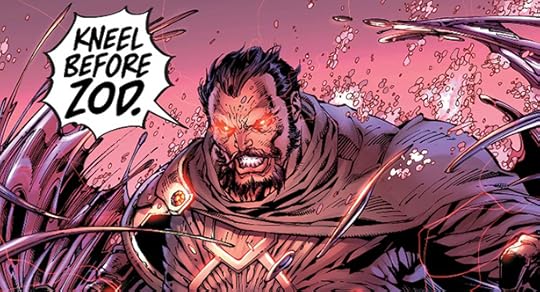
Although General Zod first appeared in DC Comics in 1961, he was just one of several different Phantom Zone criminals who came into conflict with Superman over the years, and didn’t make that much of an impact. But when director Richard Donner was making the original Superman movie, he gave actor Terrance Stamp’s Kryptonian character the name Zod, and it was then that the villain truly reached iconic status. There have been other interpretations of Zod in the comics over the years, but they all stem more from Stamp’s portrayal of the character than anything from any comics that came before him.
In both Superman II and Man of Steel, Zod’s trusted second-in-command is a bad ass female Kryptonian. First it was Ursa, then more recently it was Faora. I would imagine that on Supergirl, we’d get a version of one or both of those bad ass ladies, although so far, no casting announcements have been made. Zod is certainly a big enough threat that Kara wouldn’t be able to handle him on her own, which is probably why her cousin Superman (Tyler Hoechlin) is also returning for the season 2 finale. Superman is only used sparingly on the show, so if Zod is indeed the big bad for season 3, Kara will likely be taking him on alone for the most part.
What do you think is in store for Supergirl facing off against one of her cousin’s most dangerous villains? Let us know your thoughts down below in the comments.
Images: DC Comics
Dave Grohl Performed with Preservation Hall Jazz Band on COLBERT
The late night television war between Stephen Colbert and Jimmy Fallon is as heated as it’s ever been, and regardless of which host you most identify with, there’s no denying that both shows have the services of some fantastic musicians. Just as The Roots are indispensable to Fallon’s program, so too is Jon Batiste and Stay Human to Colbert’s. Bastiste’s band got some beefing up last night, though, when they were joined by the Preservation Hall Jazz Band, the preeminent big band jazz group playing today.
That already-great pairing was enhanced even further when Dave Grohl hopped on a minimalist drum set and joined both groups for a rousing rendition of “Santiago,” which you can check out below.
What’s also fun is the reason why Grohl was around: He and his mother Virginia were actually panel guests there to promote her new book, From Cradle to Stage: Stories from the Mothers Who Rocked and Raised Rock Stars, and they had a good time. They looked at Grohl’s less-than-excellent sixth grade report card, and he shared stories about being a rebellious teenager, sneaking out at night and borrowing his mother’s car as quietly as possible.
They also got more serious for a second while discussing the death of Kurt Cobain, and the more maternal of the Grohls said that it really changed their relationship:
“It was such a dark, sad time. David came home after that so we all sort of had to regroup. We talked a lot… We’ve always been able to say everything to each other. But that was a particularly sort of incredible time. It’s hard to express.”
It’s nice to see the love and camaraderie Grohl and his mother have for each other, so check out their interview below, and let us know in the comments if you plan on checking out her book, which we’re sure is going to be fascinating.
Featured image: The Late Show With Stephen Colbert/YouTube
Puck Soup #48: Sarah Baicker, ESPN layoffs
Greg and Dave welcome former CSN host and Philadelphia sports pundit Sarah Baicker to talk about the Flyers, Philly as a sports town, how TV people are treated by athletes and the nasty sendoff she received from one fan. Plus, comments about the massive ESPN layoffs that claimed some hockey writers, predictions for the second round of the Stanley Cup Playoffs, working for the Sabres, chaos in Chicago, how we played NES and our favorite games, movie sequels we may not want to see, and reader mail covering obscure fast food items, mini-golf etiquette and what Dave sings in the shower. Sponsored by Helix Sleep and Zip Recruiter.
Follow @wyshynski, @davelozo and @PuckSoupPodcast on Twitter!
Get Ready for AMERICAN GODS with Laura Moon’s Chili
Sometimes joyful memories are the only things that can get you through the toughest of times. In Neil Gaiman‘s American Gods, Shadow’s prison time was eased with thoughts of his late wife Laura. The smell and taste of the chili she made was something that Shadow held dear and no other meal could come close.

Gaiman was incredibly descriptive in recounting Shadow’s favorite recipe. The flavors practically jump off the page:
“Laura made a great chili. She used lean-cut meat, dark kidney beans, carrots cut small, a bottle or so of dark beer, and freshly sliced hot peppers. She would let the chili cook for a while, then add red wine, lemon juice, and a pinch of fresh dill, and, finally, measure out and add her chili powders. On more than one occasion Shadow had tried to get her to show him how she made it: he would watch everything she did, from slicing the onions and dropping them into the olive oil at the bottom of the pot on. He had even written down the sequence of events, ingredient by ingredient, and he had once made Laura’s chili for himself on a weekend when she had been out of town. It had tasted okay–it was certainly edible, and he ate it, but it had not been Laura’s chili.”
Beer adds a deep flavor to the spice-laden stew, and by cooking it low and slow, the ingredients are broken down, making this rich and savory recipe the perfect homage to Shadow’s favorite meal. Make up a pot and settle in to watch the debut of American Gods this week on Starz.
Laura Moon’s Chili from American Gods

Ingredients:
2 tablespoons olive oil
1 onion, diced
2 stalks celery, diced small
2 carrots, diced small
2 cloves garlic, minced
2 lbs lean beef chuck, diced
1 (28 oz) can stewed tomatoes
1 (14.5 oz) can kidney beans
2 chipotle chiles in adobo sauce, seeded and minced
2 tablespoons tomato paste
1 bottle dark beer (stout)
2 tablespoons red wine
2 teaspoons lemon juice
1 teaspoon Worcestershire Sauce
3 tablespoons chili powder
2 tablespoons brown sugar
1 tablespoon fresh dill
2 teaspoon cumin
1 teaspoon oregano
1 teaspoon salt
fresh ground pepper
1 bay leaf
In a pot over medium high heat, cook the onion, celery, carrots, and garlic in the olive oil until softened.
Add the beef chuck and cook until browned.
Turn down the heat to medium-low.
Add the stewed tomatoes, kidney beans, chilies, tomato paste and beer.
Simmer for 60 minutes.
Stir in the red wine, lemon juice, and Worcestershire Sauce.
Add the chili powder, brown sugar, dill, cumin, oregano, salt, pepper, and bay leaf.
Cover and simmer for 30 minutes.
Serve hot.
Are you looking forward to American Gods? Let us know in the comments.
Images: Jenn Fujikawa
Schlock & Awe: CALTIKI, THE IMMORTAL MONSTER
Every monster that made its way to movies seems to have had a major heyday at some point. From vampires to werewolves to zombies, if it works once, chances are filmmakers are going to try to make it work again. This was even true of enormous, pulsating goo monsters. In 1955, Hammer made The Quatermass Xperiment about an astronaut turning into an alien blob, then they made the similar X the Unknown the following year. And even ’50s drive-in movies from America took a key with the colorful The Blob from 1958.
But those were all scientific menaces. What none of these movies had was the blob as an ancient, world-destroying behemoth. None of them, that is, except the 1959 Italian-American production, Caltiki, the Immortal Monster.
Possessing elements of H.P. Lovecraft‘s Cthulhu mythos, a setting like a Mayan take on The Mummy, and a finale right out of Quatermass, Caltiki, the Immortal Monster has a ton of elements that make it stand out in the world of monster movies, while still being very familiar. It’s also mainly notable for having gorgeous black & white cinematography and impressive-for-the-time special effects by future horror maestro Mario Bava, who ended up directing all of the action and effects sequences in order to prove he could direct his own pictures, a gift from his friend Riccardo Freda, the credited director.
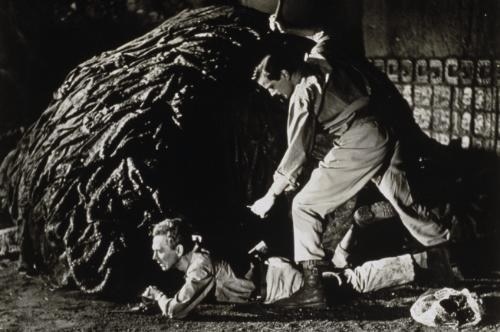
Caltiki is a very interesting movie in terms of how it’s constructed; the beginning is suitably creepy before turning into kind of a weird romantic melodrama (that flatly doesn’t work), and finally becoming an all-out effects explosion by the end. It’s set in Mexico and is purportedly based on a real Mayan legend, but there’s no evidence of that in it, really. Its lead is an incredibly boring Canadian-born British actor named John Merivale who was seemingly only cast to give the movie some English theatre clout (the Italians loved British films), and any time Bava’s effects aren’t on screen, the movie drags…and yet any time they are, it’s electric.

The film opens on an archaeological dig in Mexico for Mayan artifacts. One archaeologist comes stumbling back to camp, his partner dead, raving about having seen something in a cave. The team leader, Dr. Fielding (Merivale), becomes intrigued and takes the team into the cave to investigate. Once there, they find a deep pool of water and a giant statue to the ancient Mayan goddess Caltiki, said to be vengeful and in need of human sacrifice. One of Fielding’s associates goes into the pool and swims down to find sunken gold and treasures. Going back a second time (because he’s a greedy idiot), the man’s line becomes mysteriously taut, so they pull him up only to find, after removing his diving mask, that something has made his body instantly decay.

The shapeless form that attacked said greedy idiot then comes looking for more, and another associate, the boorish Max (Gérard Herter), is subsequently grabbed on the arm by it. Fielding chops Max’s arm free (still engulfed by a portion of the creature) make an escape, driving a gasoline truck into the beast and having it engulfed in flame. Max’s engulfed arm has been turned into skeleton and goo. They all return to Mexico City, where Fielding has the portion of the blob held in quarantine. Max, meanwhile—already a pretty shitty person to begin with—starts to act more and more abhorrently, treating his ex-prostitute girlfriend like crap and making passes at Fielding’s wife.

As you might have guessed, Max has been overtaken by the beast, and not only that, but the bit of the monster they have begins to move around in its container, due to a particular comet flying over the Earth, which hasn’t happened in 850 years. More pieces of this monster reawaken from around the temple and Fielding has to convince the Mexican authorities to do something about it, which leads to an explosive army-versus-blob-monster finale.
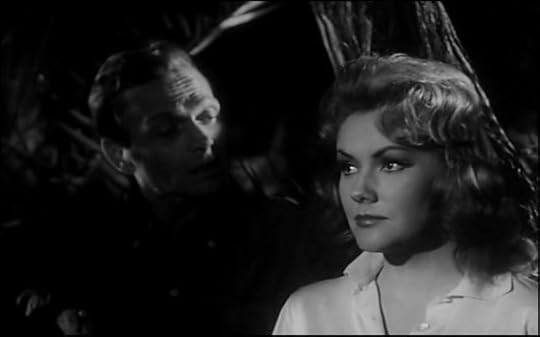
The first thing that’s noticeable about the movie is that it’s incredibly dark. Like physically, I mean; the black and white photography has deeper blacks than most movies, especially of the era. This was so Bava could more accurately control the shadows and light, but also to better hide the joins in the special effects images. He loved to downplay his own techniques—which were top-notch—and liked to tell people that the monster was nothing more than tripe with a man inside to move it around. Whatever it is, it’s incredibly effective. It’s also got some insane gore that I’m surprised was allowed in 1959; nobody did gore like the Italians and the monster engulfing people and dissolving everything but their bones is as chilling and grotesque an image as any you could see.

Bava also perhaps offered cinema the first found-footage sequence. In the story, the first archaeologist and his deceased and never-seen partner are in the cave, and the partner is shooting 16mm film of their findings. This is watched after the fact by Fielding and the others, and every trick you come to associate with found-footage is there. And while Bava’s doing this really innovative photography and low-budget effects, and the story brings in everything from god-worship to alien entities to the literal end of the world, the movie’s second act feels almost totally concerned with what the two couples are up to…which, let me assure you, I am not.

I’d never seen this movie until it was released by Arrow Films this week. The beautiful thing about this Blu-ray (and really every Blu-ray Arrow releases) is that it’s packed with information. There are two feature length commentaries: one from film scholar and Mario Bava biographer Tim Lucas and another by critic and Bava biographer Troy Howarth. There’s also a great interview with critic and author Kim Newman about the filmic antecedents of Caltiki, how it feels like Cthulhu but was probably just accidental, and why Blobs were a thing people feared there for awhile. Great for people curious about weird old movies, for sure, or—like me—if you’re a big fan of Lovecraft, Bava, and Quatermass author Nigel Kneale.
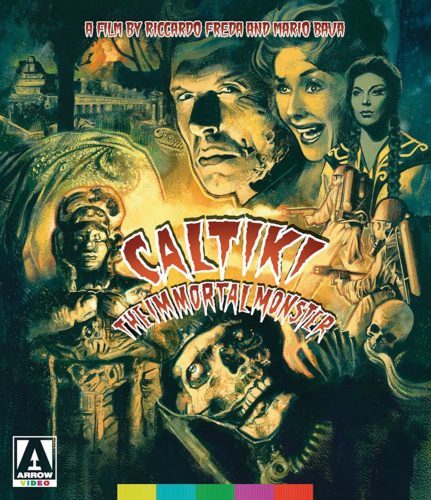
Caltiki, the Immortal Monster is a weird and clearly imperfect movie, and while the acting is pretty poor from everyone except the villain of the piece, the look is incredibly moody and eerie with effects most impressive, given the limitations. Bava—who’d go on to become the father of the giallo with Blood and Black Lace and would make his stamp with Gothic mood pieces like Black Sunday, The Whip and the Body, and Kill, Baby, Kill—was first and foremost a brilliant cinematographer and special effects director, and this movie really lives and dies by this alone. Worth watching for this, and hey, it’s only 76 minutes so it’s not even much of a commitment.
Images: Allied Artists/Arrow Video
Kyle Anderson is the Associate Editor for Nerdist. He writes the weekly look at weird or obscure films in Schlock & Awe. Follow him on Twitter!
April 26, 2017
Artificial Womb Helps Premature Sheep Grow, Could Work For Humans Someday
In case you haven’t noticed, modern technology is capable of some amazing things. We’ve created a real-life Iron Man-style jetpack, a that could be the future of farming, and now, it looks like we’ve even hacked the womb.
According to The Verge, researchers from the Children’s Hospital of Philadelphia are developing an artificial womb, and it’s actually been very effective in testing with fetal lambs. The contraption, called the Biobag, has been tested on eight subjects so far, and in the uterus-emulating enclosure, the lambs’ lungs and brains grew, their wool started coming in, and they even learned to open their eyes and swallow. The lambs were born prematurely, and through this method, they’ve been able to continue normal development, as if they never left their natural womb.
The clear plastic bag is filled with an electrolyte solution that functions like placenta, while the umbilical cord is attached to a device that delivers oxygen and nutrients to the blood. The science is incredible, and while the ultimate goal is for this technology to be used in prematurely born human babies to give them a better chance of survival, it’s just not ready yet. More work needs to be done, but fetal surgeon Alan Flake—who is leading the research (published here)—is optimistic that human trials could begin as soon as three years from now.
“I’m still blown away, whenever I’m down looking at our lambs,” he told The Verge. “I think it’s just an amazing thing to sit there and watch the fetus on this support acting like it normally acts in the womb… It’s a really awe-inspiring endeavor to be able to continue normal gestation outside of the mom.”
Some suggest that artificial wounds could someday be used to grow babies for an entire pregnancy, although Flake calls that idea “complete science fiction.” Do you think this technology will ever reach that level, or are we getting ahead of ourselves? Hit us up on Twitter and let us know what you think!
Featured Image: Dave Herholz/Flickr
Chris Hardwick's Blog
- Chris Hardwick's profile
- 132 followers




